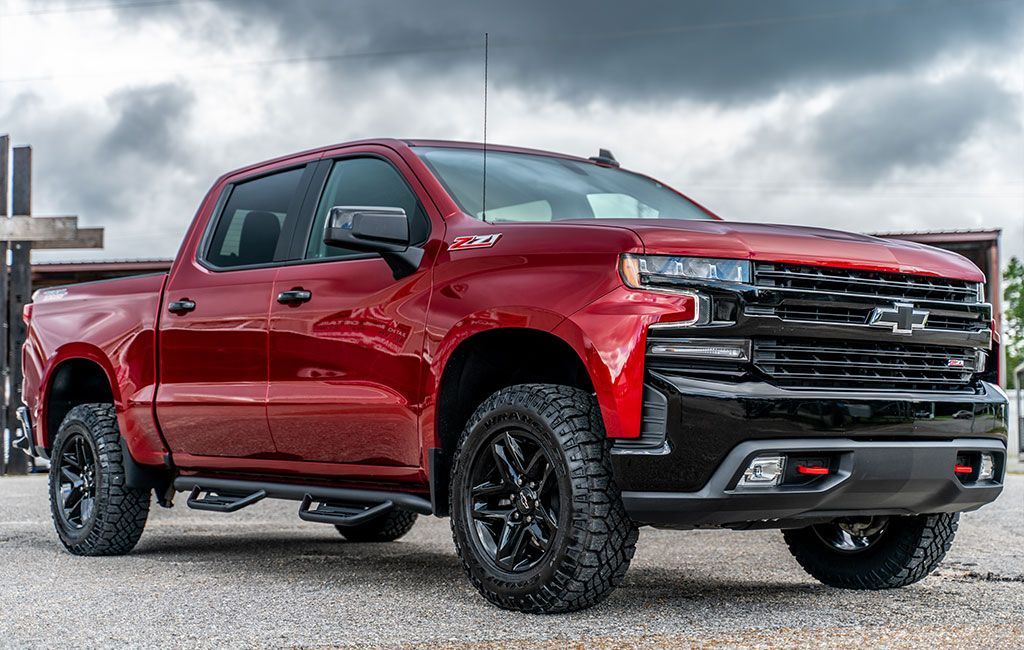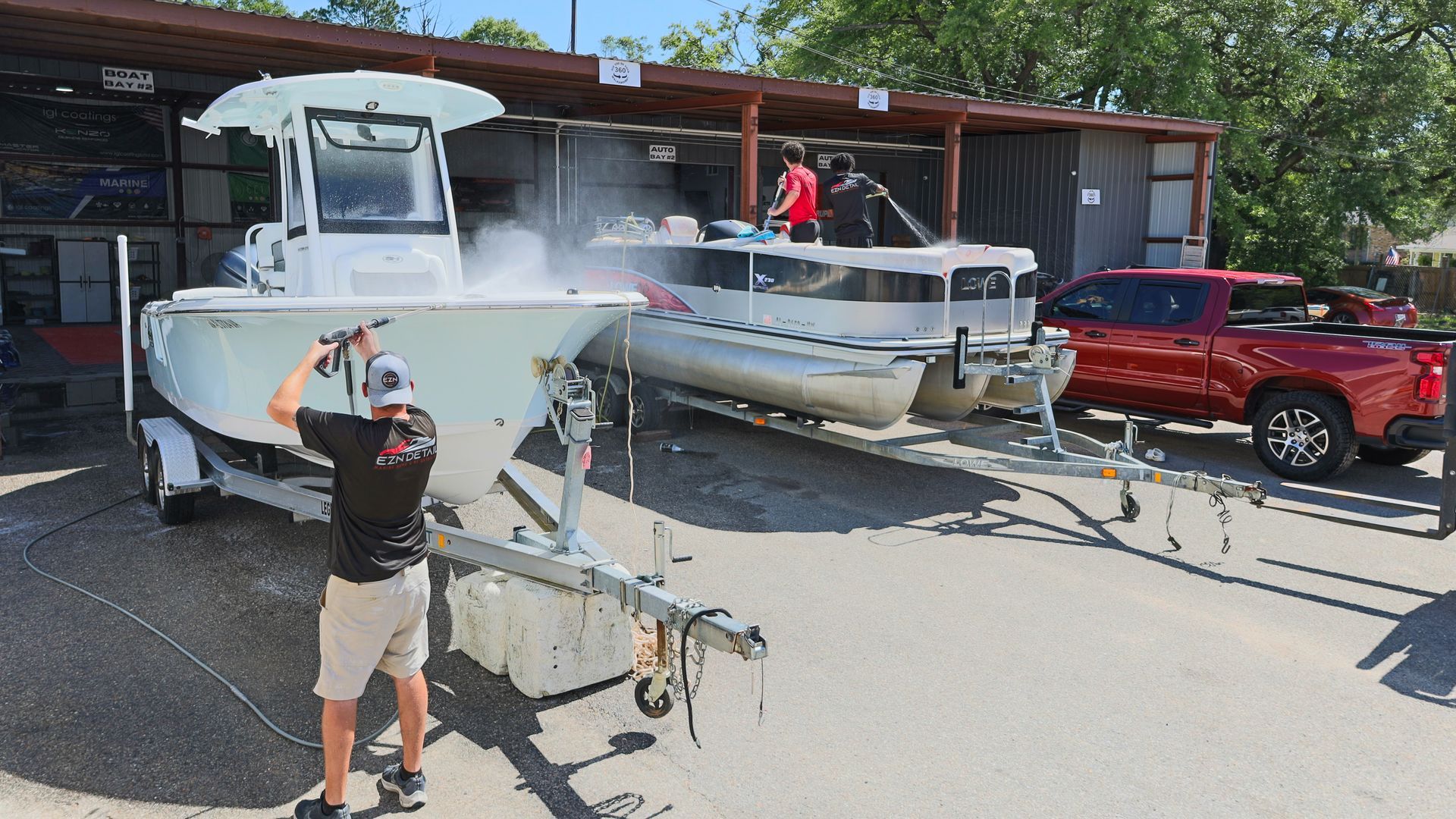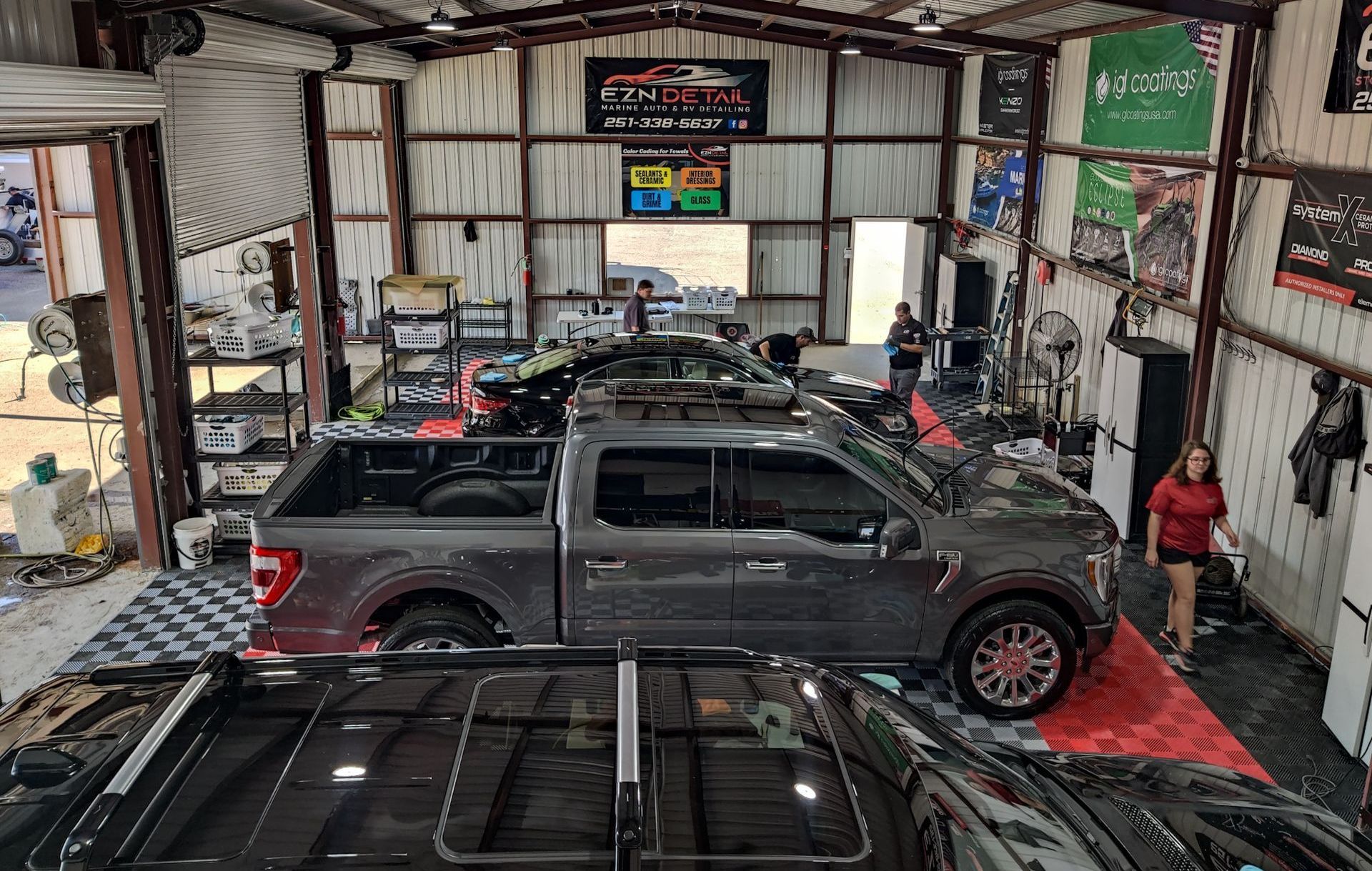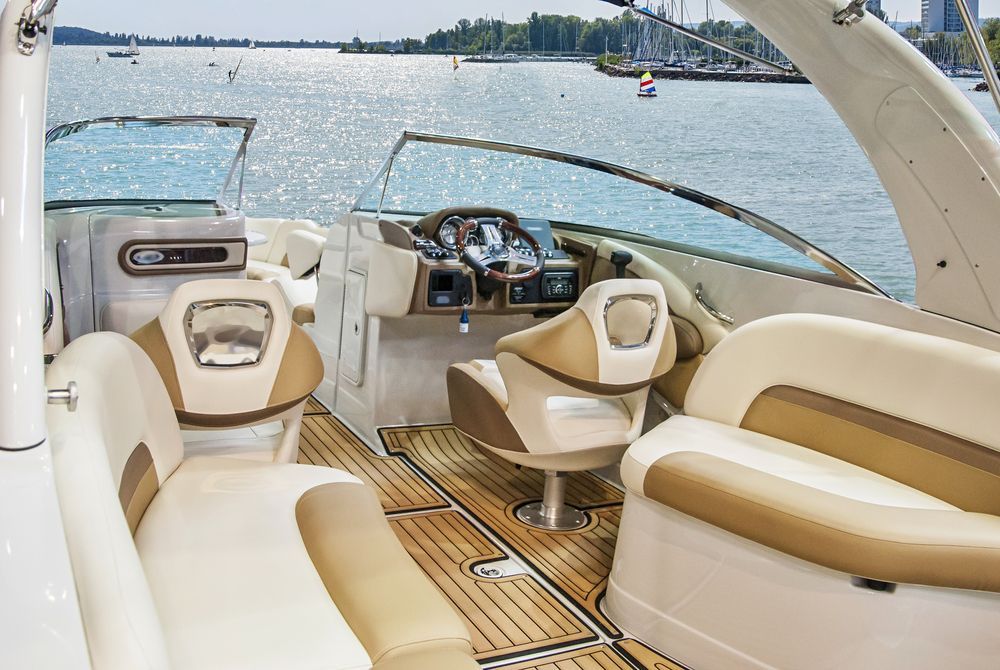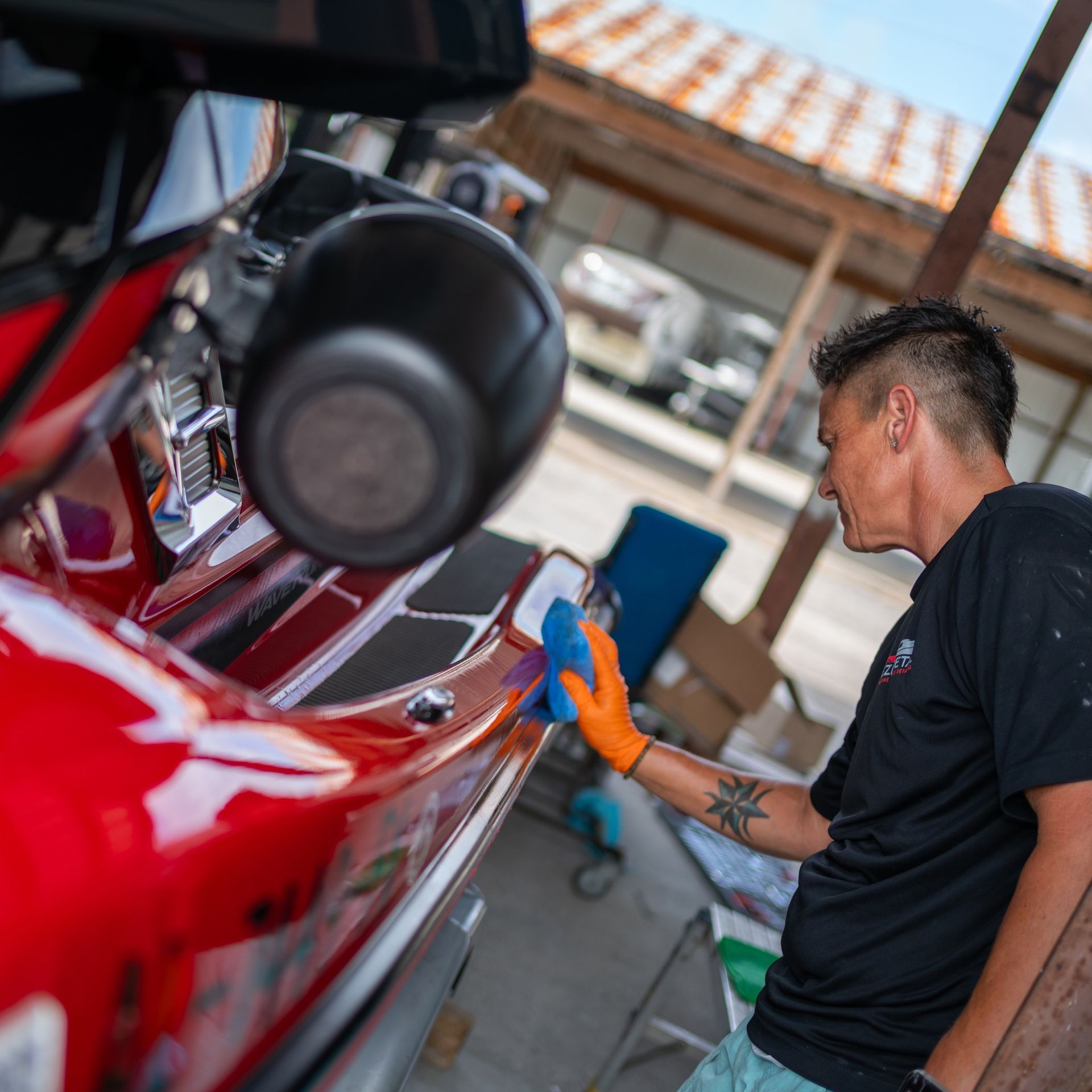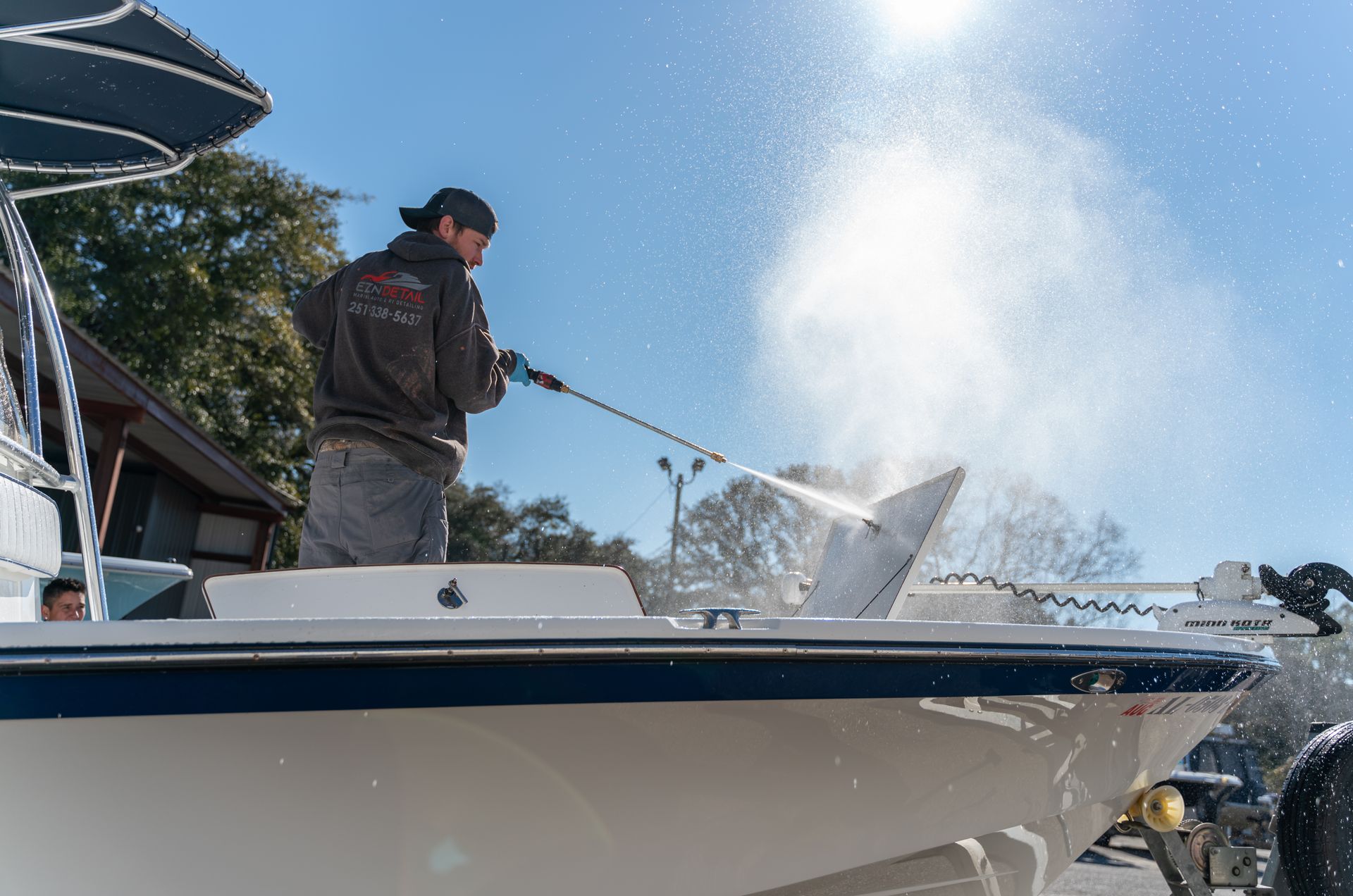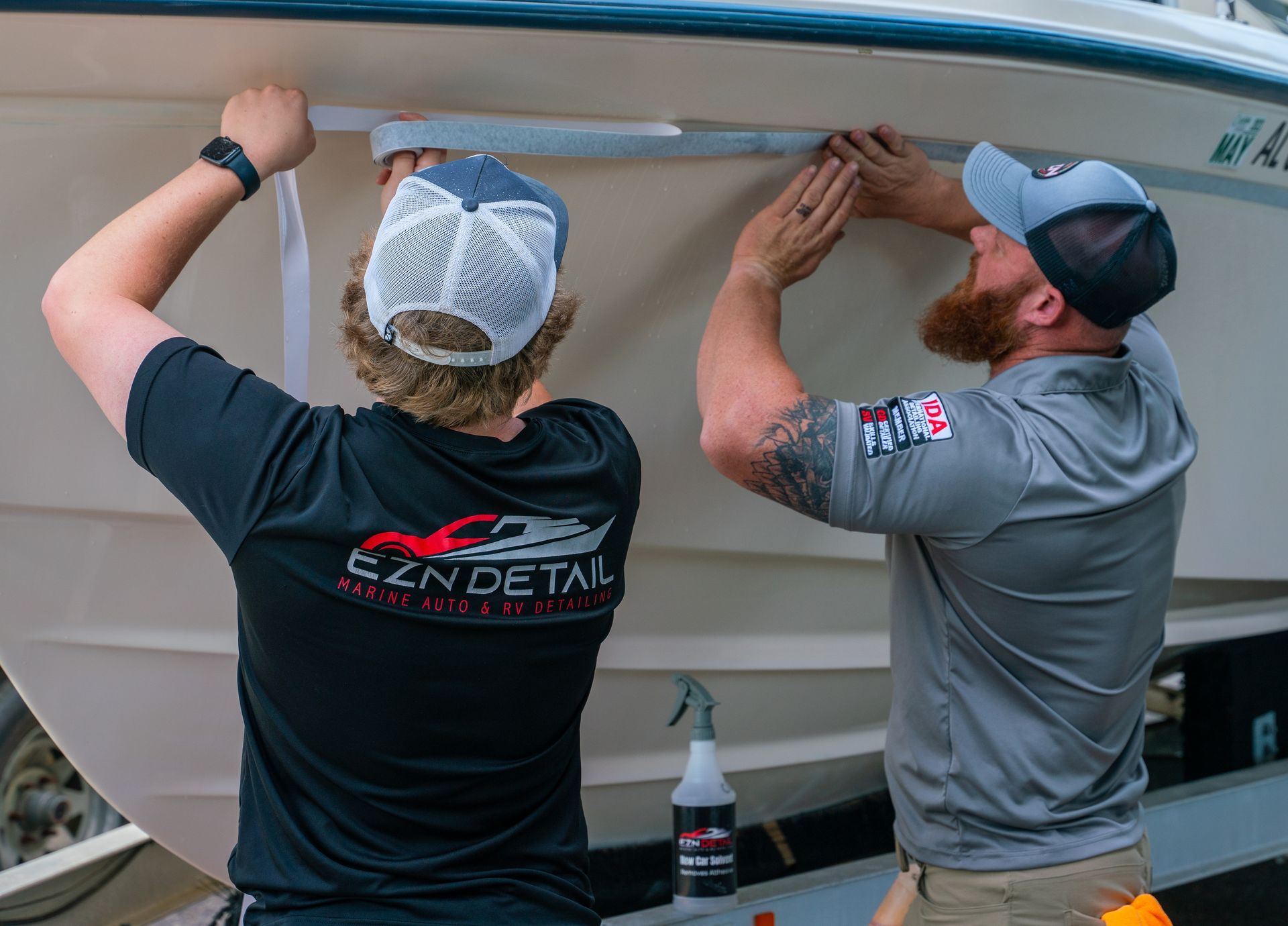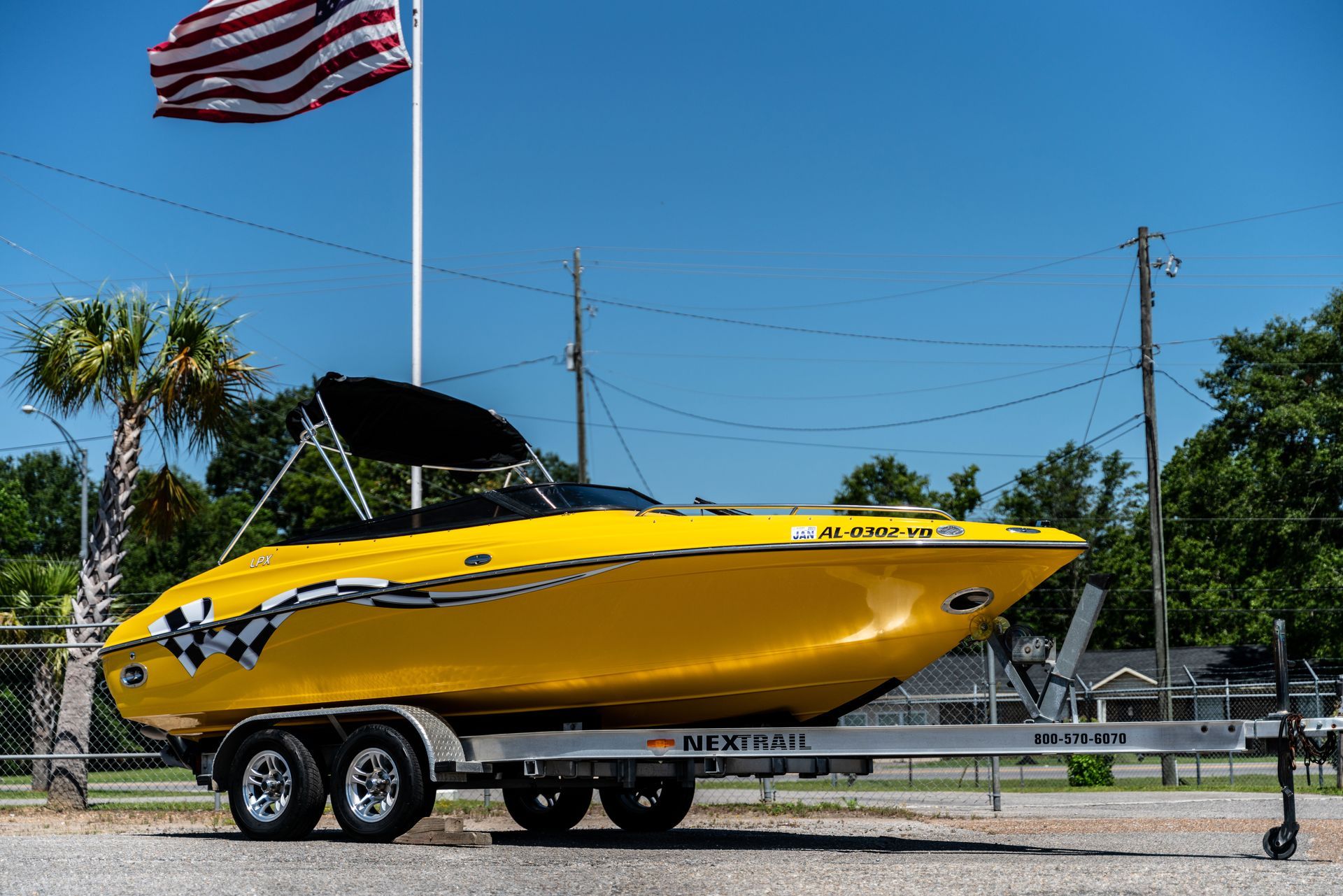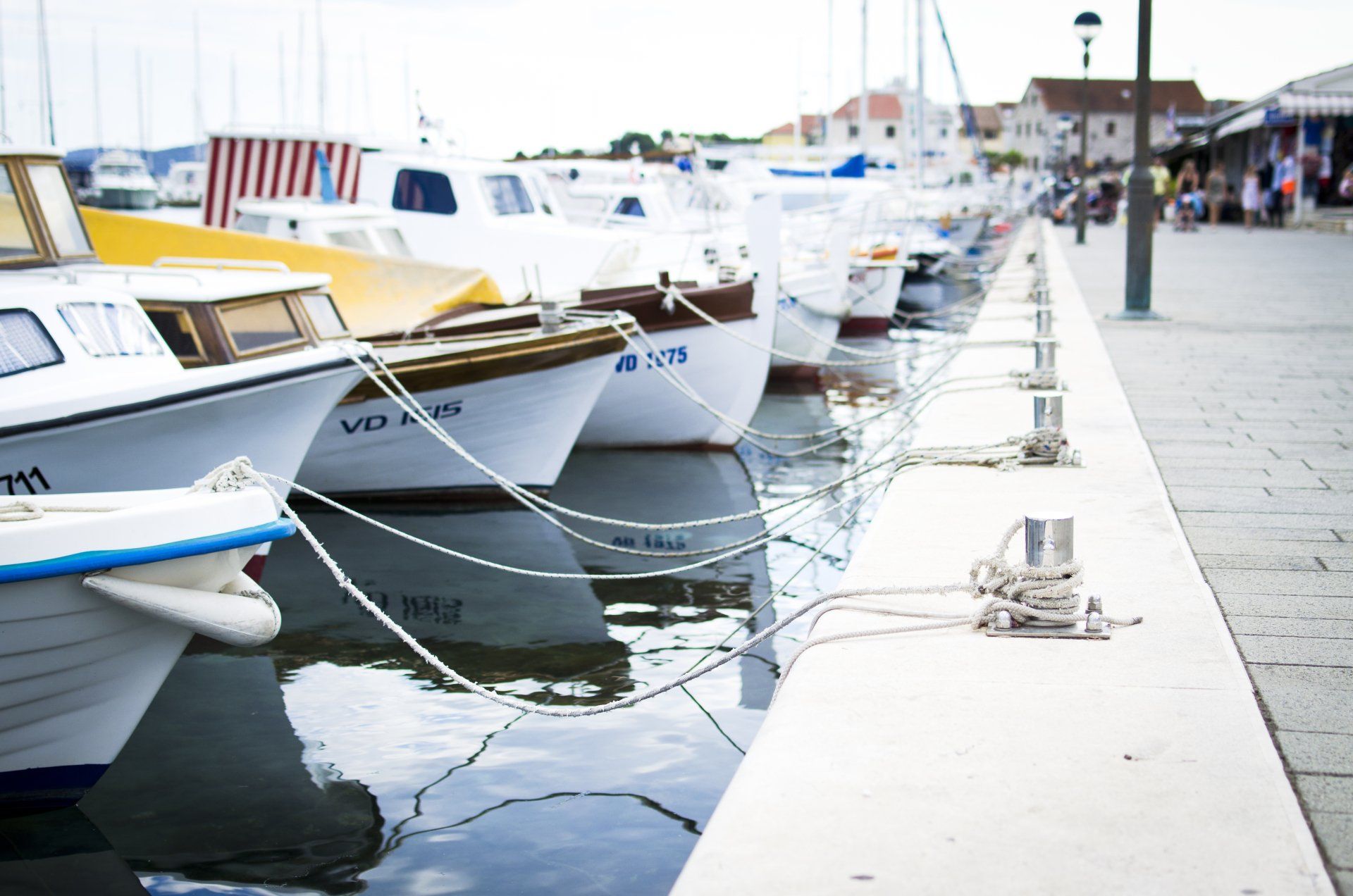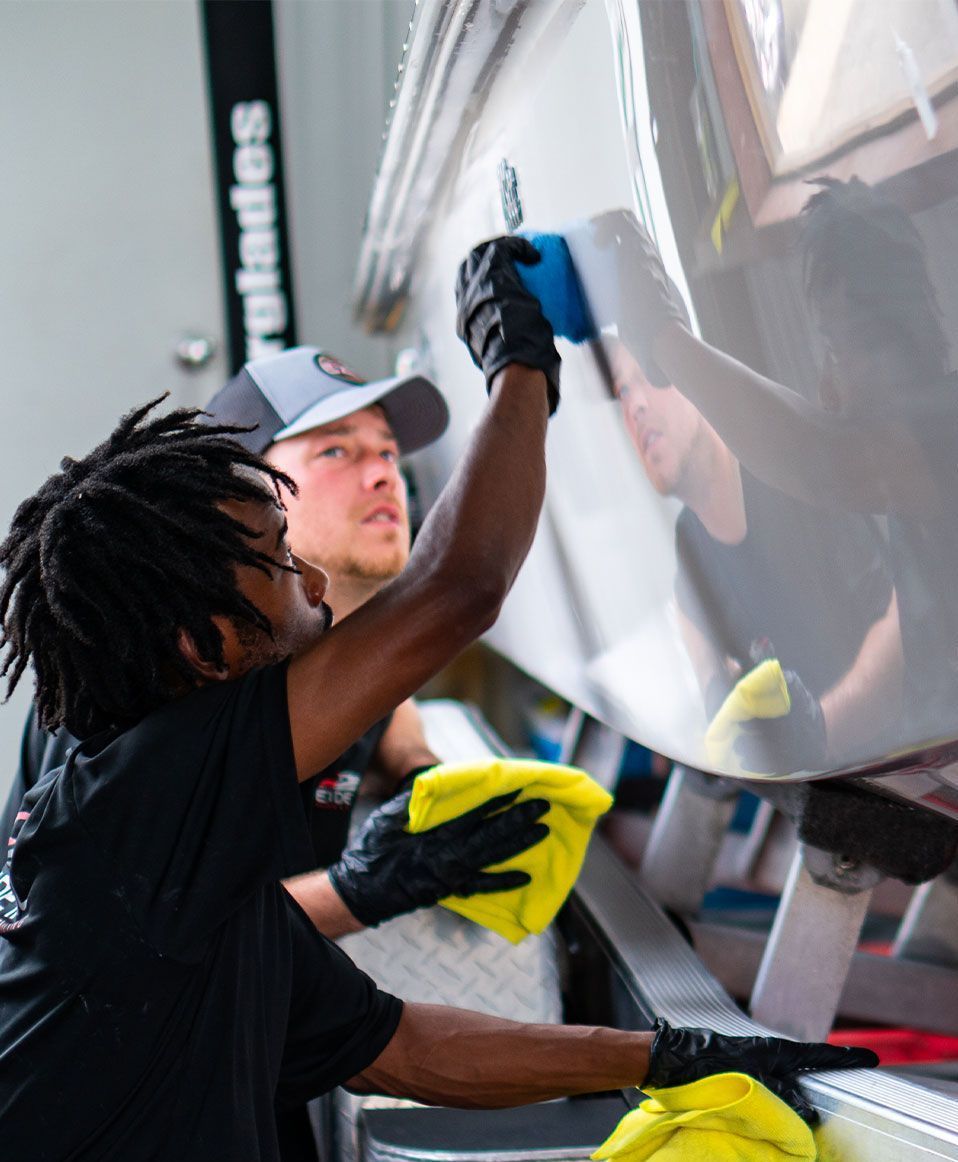The Science Behind Ceramic Coatings: Why They Work for Both Cars and Boats
GET INSTANT PRICE (251) 338-5637When it comes to protecting your car or boat, you might be wondering what really works. Maybe you’ve tried waxes that wear off quickly or sealants that don't quite cut it. Enter ceramic coatings—these modern marvels promise to keep your vehicle looking sharp while shielding it from nature's foes. With science backing their claims, ceramic coatings are gaining traction for their durability and appearance-enhancing benefits. Let’s dive deeper into how these advanced protective layers function and why they might just be the upgrade your vehicle needs.
The science behind ceramic coatings involves advanced liquid polymers that cure to form a durable protective layer on surfaces. These coatings utilize nanoparticles that bond to the vehicle or boat's exterior, creating a hydrophobic barrier that protects against swirl marks, UV damage, and stains, thereby significantly enhancing the durability and longevity of both cars and boats in harsh environmental conditions.
Core Science of Ceramic Coatings
The foundation of ceramic coatings lies in nanotechnology, which has revolutionized how we protect our vehicles and boats. When these coatings are applied, they are made up of nanoparticles that penetrate the microscopic pores of the paint surface, resulting in a smooth, hydrophobic layer that repels water and contaminants. This smooth surface acts like a shield, keeping harmful elements at bay and ensuring your vehicle’s finish remains pristine.
Imagine each nanoparticle as a tiny armor piece that fortifies your vehicle’s exterior. These particles don’t just sit on top; they engage in a process known as covalent bonding. This means that they fuse with the paint at a molecular level, forming an inseparable layer that protects against swirl marks, stains, and other forms of damage.
To put it simply, covalent bonding transforms the coating into more than just a temporary shield; it becomes one with the paint itself, enhancing durability significantly.
Think of each nanoparticle as a dedicated soldier filling the gaps in the walls of a fort. Their job is to reinforce those walls against invaders like dirt, grime, and ultraviolet rays. Without these tiny soldiers at work, your vehicle would be vulnerable to various threats lurking in everyday environments.
Understanding how these microscopic wonders work helps illustrate why ceramic coatings offer such robust protection compared to traditional waxes or sealants.
Performance Benefits
The performance benefits of ceramic coatings are striking. Beyond mere aesthetics, they dramatically enhance UV protection—by blocking harmful rays that can lead to oxidation and fading. This is particularly critical for newer models with thinner paint applications, which can be especially susceptible to environmental stressors.
Furthermore, the average thickness of a ceramic coating layer averages only 1 to 2 microns, which is considerably thinner than conventional waxes. Yet, this thinness belies its strength; ceramic coatings can elevate surface hardness to an impressive 9H on the pencil hardness scale, achieving remarkable resistance against swirl marks and abrasive particles.
The effectiveness of ceramic coatings is not merely anecdotal; it’s a manifestation of advanced scientific principles working harmoniously to protect your investments while enhancing their appearance. With greater durability lasting anywhere from 2 to 5 years, depending on conditions and application quality, users can enjoy peace of mind knowing their vehicles or boats are safeguarded against daily wear and tear.
As we explore further, it becomes clear that these protective features also extend the visual appeal of your assets, creating an impressive finish that's hard to miss.
Enhancing Appearance and Gloss
One of the most appealing aspects of ceramic coatings is the incredible enhancement in appearance they bring. Users often rave about this stunning effect, frequently describing it as a “wet look.” This term encapsulates the sense of depth and brilliance that imparts a fresh-out-of-the-showroom vibe to any vehicle, regardless of its age.
What makes this gloss so lasting is the unique composition of ceramic coatings. As they cure, they create a smooth, glass-like surface that reflects light in vibrant ways, effectively amplifying the underlying paint’s color and vibrancy.
Picture yourself walking through a parking lot on a sunny day, your eyes drawn to a car shimmering like a jewel under the afternoon sun. That captivating gleam comes from the ceramic coating, which not only provides an unmatched shine but also enhances the color profile of the paint beneath it. When light strikes the coated surface just right, it produces an eye-catching prismatic effect—akin to how a polished silver car glistens. Many who experience this dazzling result end up marveling at their vehicle’s transformation into something that feels almost alive.
Those who have witnessed such remarkable changes can testify that enhancing appearance isn't simply about aesthetics—it’s about pride of ownership.
If you’re considering ceramic coatings for your vehicle, it's essential to invest in a quality product to achieve such glorious results. Ensure proper application because an incorrectly applied or inferior product won't yield the spectacular finish you expect. A good product coupled with skilled craftsmanship can deliver breathtaking results that remain easy on the eyes for years to come.
When professionals are consistently impressed by the enhancements provided by these coatings, it’s a strong indication of their capability to transform your vehicle's appearance completely.
By understanding how ceramic coatings enhance appearance and contribute to aesthetics, we can further explore their durability and resistance benefits.
Durability and Resistance Benefits
The durability of ceramic coatings is a cornerstone of their appeal, especially for those who value long-lasting protection for their vehicles or boats. Our vehicles face a daily assault from natural and man-made elements alike, making the need for robust protection crucial. This is where ceramic coatings truly shine, offering a shield that enhances longevity and performance in ways traditional waxes cannot match.
Resistance to Environmental Factors
One standout feature of ceramic coatings is their formidable resistance to environmental threats. For instance, UV rays are notorious for causing oxidation and fading in paintwork over time, significantly diminishing a vehicle's aesthetic and potentially its resale value. However, ceramic coatings effectively counteract these effects by blocking harmful UV radiation, keeping your car looking vibrant even after prolonged exposure to the sun.
The real beauty of these coatings lies in their ability to preserve your vehicle’s finish for years while you enjoy peace of mind.
Another significant advantage is their defense against chemical stains. Everyday exposures like bird droppings, tree sap, and acidic contaminants can wreak havoc on untreated surfaces. With a robust ceramic coating in place, these substances can often be wiped away without leaving any damage behind, providing a much-needed buffer against unexpected mishaps.
Equally important is how ceramic coatings combat swirl marks. Traditional methods may leave your paint vulnerable to minor nicks from car washes or debris on the road. Fortunately, the hard layer formed by ceramic coatings offers an impressive hardness rating of 9H on the pencil hardness scale. This characteristic significantly reduces the likelihood of swirl marks penetrating through to the underlying paintwork—resulting in fewer unsightly blemishes over time.
Research indicates that vehicles treated with ceramic coatings experience less paint wear over three years compared to untreated surfaces. This remarkable statistic highlights both the immediate benefits and the long-term savings associated with maintaining your vehicle's integrity.
Cars vs. Boats: Comparative Effectiveness
The environments in which cars and boats operate are indeed drastically different, significantly impacting the performance of ceramic coatings. Vehicles primarily encounter UV rays from the sun but don’t usually deal with the corrosive effects of saltwater. As a result, while a standard ceramic coating may effectively protect a car’s paint job from harmful UV radiation—blocking those rays—it might fall short against the harsh elements faced by marine vessels.
Environmental Challenges
| Feature | Exposure to UV Rays | Saltwater | Surface Materials | Maintenance Frequency |
|---|---|---|---|---|
| Cars | High | N/A | Primarily Paint | Moderate |
| Boats | Very High | High | Paint, Fiberglass, Gelcoat | High |
Each of these factors plays a critical role in how effective your ceramic coating will be. Take exposure to UV rays; while cars see their fair share, boats endure unrelenting sunlight due to their open nature on water bodies. This prolonged exposure significantly raises the risk of fading and deterioration. Similarly, saltwater can wreak havoc on any material it contacts; thus, marine-specific coatings must offer superior resistance not only to UV rays but also to salt corrosion.
Marine coatings have advanced technology that enhances their durability against the combined threats of saltwater and UV exposure.
Maintenance frequency is another crucial point of differentiation. While cars benefit from regular cleaning and maintenance, boats require much more frequent attention due to heavy exposure to grime and biological growth when left afloat in water. Ceramics designed for marine use provide an added convenience here; they often allow for easier cleaning processes that can reduce upkeep time considerably.
Remember, investing in quality products and following proper procedures will not only enhance your vehicle’s aesthetic appeal but also prolong its life significantly. For tailored product recommendations and detailed guides on ceramic coatings, visit us at ezndetail.com.
Incorporating these steps will greatly enhance both the appearance and longevity of your investment—consider taking action today by signing up for our services at this link or calling (251) 338-5637!

